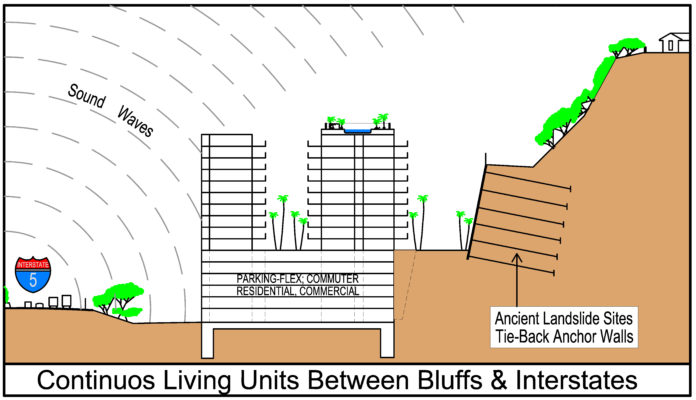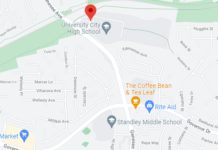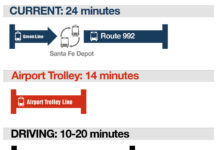Commentary by Lou Rodolico
Housing is expensive in San Diego, the average worker making less than 2/3 of the earnings necessary for a median $483,000 home. So we need new living units with an average price point of about $300,000. However, developers pay fines to remove affordable housing from their projects. These fines fall into the category of “Alternate Means of Compliance’. The fines go into city coffers, providing a clear dis-incentive for the city to provide affordable housing. See Planning Commission Link.
The city is looking to build over 150,000 new housing units by 2050. If we could also hold city government expansion below 10% that would provide much needed pension deficit relief.
The City of San Diego’s population is growing 1% per year and the County of San Diego 1 1/4%. What remains to be developed in the City are small pockets of land with adjacent homeowners fighting development. Also well-funded conservancy groups have championed an alphabet soup of restrictions from burrowing owls to vernal pools. The Planning Commission is recommending high rise housing, but has found little popular support. For these reasons it is easier to build in the County which has resulted in a continual expansion towards the easterly fire zones. Much of the County is un-incorporated with isolated roads and poor fire service. For these reasons it makes sense to try to increase the population in the City with its fire protection network.
The Mayor’s most recent proposal is to add additional housing units in transit priority areas without parking. This sounds ridiculous on its face, but it is likely that in the future car ownership will rapidly decline. But that is in the future. Building without parking today will not work. Owning a car could eventually become a relic of the past with; on-demand autonomous self-driving vehicles, a more extensive rapid transit system, more last mile options, and many of us telecommuting to work. Generations from now a few of us will drive cars much like some of us ride horses today; a pleasant homage to the past. At a February 7th community meeting District 2 council member Dr. Campbell lamented a council sub-committee decision affirming the Mayors no parking position.
We can take a page from the Costa Verde shopping center expansion. Our Sub-Committee suggested they build out their parking garage with flex-space. As the need for parking inevitably declines flex-space parking would be designed to be more readily converted for other uses like; storage, store expansion, or additional retail. See: Clairemont Times, March 2018 Page 11
Flex space could also work with housing. New parking garages would be designed as level floors convertible into living units as fewer of us own cars. For conversion into apartments outdoor garage openings could be designed to accept future window systems. Flex space structures give building owners an incentive to support mass transit and make sense in or out of transit priority areas.
That leaves us with the last and biggest problem; Where? One answer; there are stretches along the I-5 corridor, north of Balboa and south of Gilman Drive, see illustration. Buildings here would leverage the blue line and would be partially self-contained with food markets and other businesses. Some of these hillsides are over 300 feet and are susceptible to ancient landslides, so adding large structures will stabilize these hills against future landslides, helping garner support from higher levels of government and existing home owners above. See illustration. These buildings would also block freeway sound without blocking vista views. Their scale would make pedestrian connections over I-5 feasible.
Density would be over 7,500 living units per mile for each side of the interstate. There are about 15 to 20 miles of these interstate sites in San Diego.
After decades of facing angry residents City Planners are trying to ground taxpayer anger with newly formed citizen committees charged with re-planning the city. Planners will have to referee so it doesn’t degenerate into a grab bag pitting neighbor against neighbor. In preparation for these planning changes the city was able to get a CEQA ruling allowing anything to be removed from an existing plan without requiring a CEQA review. If your plans include future key infrastructure currently on your local plan you might want to get involved. See: Clairemont Times CEQA Judge Rules
The city has a tendency to dig in on an issue, but has demonstrated that it can change over time. For example; 15 years ago we tried to put in a Companion Unit (aka Granny Flat) for my ailing father and faced a hostile Murphy administration that did not want these “low income housing units” in San Diego. Today the city has made a full 180 and Companion Units are all the rage with support from every level of City Government. See: Council action La Jolla Light 9-14-17 Page 22
Companion and Junior Units will move the needle a little. We will need several additional strategies to solve our affordable housing shortfall; flex space, and high-rise buildings reinforcing unstable hillsides are just two possibilities. Modifying the “Alternate Means of Compliance” is another. San Diego city politicians and planners will have their work cut out for them trying to balance all the variables to meet the cities affordable housing needs.
Louis Rodolico has been a resident of University City since 2001
Planning Commission, Time: 2:57:45
https://sandiego.granicus.com/MediaPlayer.php?view_id=8&clip_id=7643




